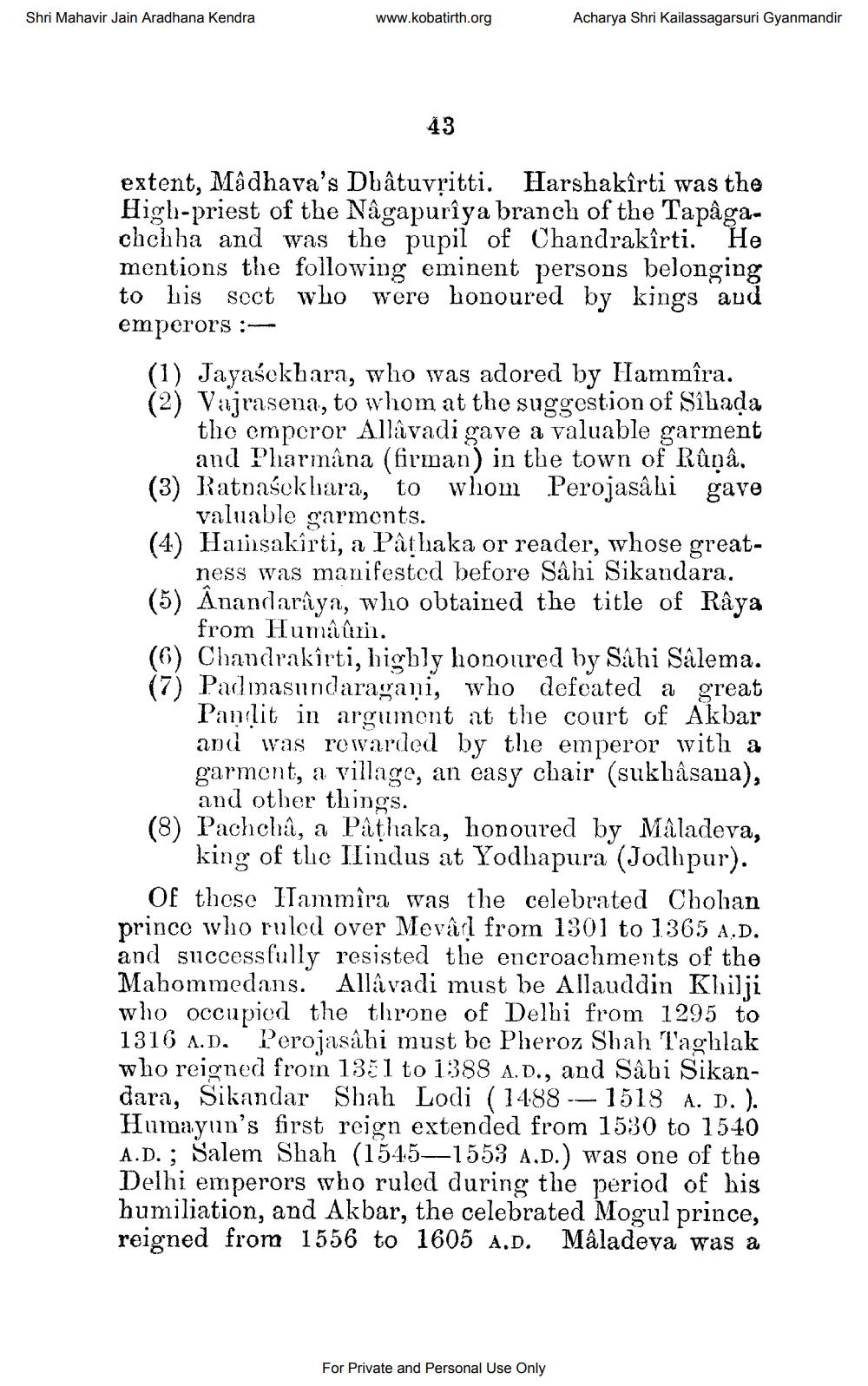________________
Shri Mahavir Jain Aradhana Kendra
www.kobatirth.org
43
Acharya Shri Kailassagarsuri Gyanmandir
extent, Mâdhava's Dhâtuvṛitti. Harshakîrti was the High-priest of the Nâgapurîya branch of the Tapâgachchha and was the pupil of Chandrakîrti. He mentions the following eminent persons belonging to his sect who were honoured by kings and emperors:
(1) Jayasekhara, who was adored by Hammîra. (2) Vajrasena, to whom at the suggestion of Sihada
the emperor Allavadi gave a valuable garment and Pharmâna (firman) in the town of Rûnâ. (3) Ratnasekhara, to whom Perojasâhi gave
valuable garments.
(4) Hamsakirti, a Pathaka or reader, whose greatness was manifested before Sâhi Sikandara. (5) Ânandaraya, who obtained the title of Râya
from Humâûm.
(6) Chandrakirti, highly honoured by Sahi Sâlema. (7) Padmasundaragani, who defeated a great Pandit in argument at the court of Akbar and was rewarded by the emperor with a garment, a village, an easy chair (sukhâsana), and other things.
(8) Pachchâ, a Pathaka, honoured by Maladeva, king of the Hindus at Yodhapura (Jodhpur).
Of these Hammira was the celebrated Chohan prince who ruled over Mevâd from 1301 to 1365 A.D. and successfully resisted the encroachments of the Mahommedans. Allâvadi must be Allauddin Khilji who occupied the throne of Delhi from 1295 to 1316 A.D. Perojasâhi must be Pheroz Shah Taghlak who reigned from 131 to 1388 A.D., and Sâhi Sikandara, Sikandar Shah Lodi (1488- 1518 A. D.). Humayun's first reign extended from 1530 to 1540 A.D.; Salem Shah (1545-1553 A.D.) was one of the Delhi emperors who ruled during the period of his humiliation, and Akbar, the celebrated Mogul prince, reigned from 1556 to 1605 A.D. Mâladeva was a
For Private and Personal Use Only
--




